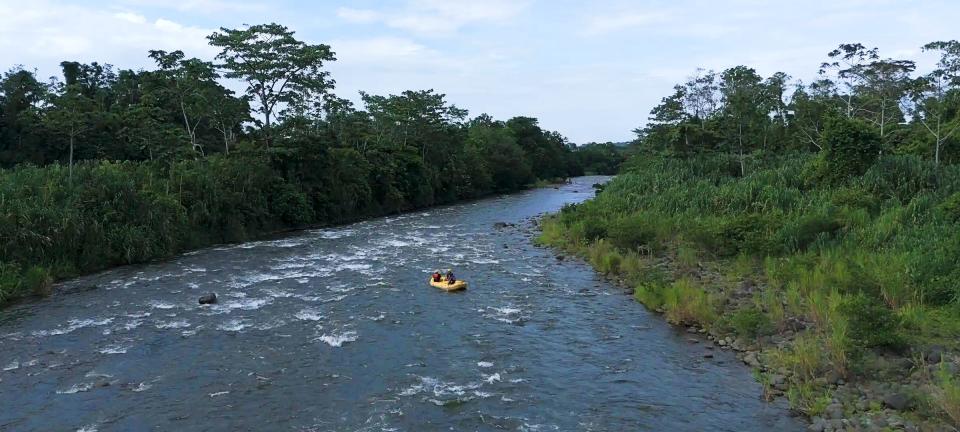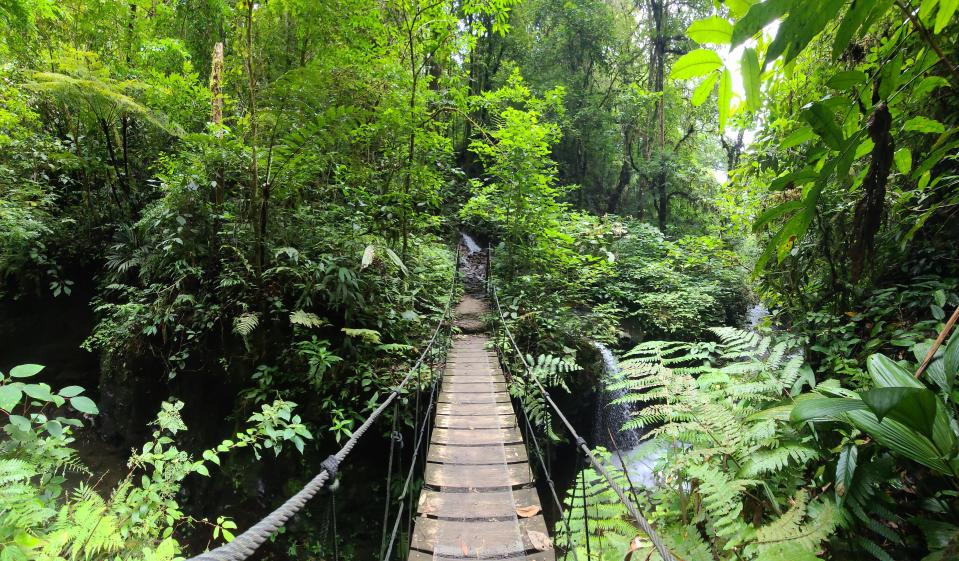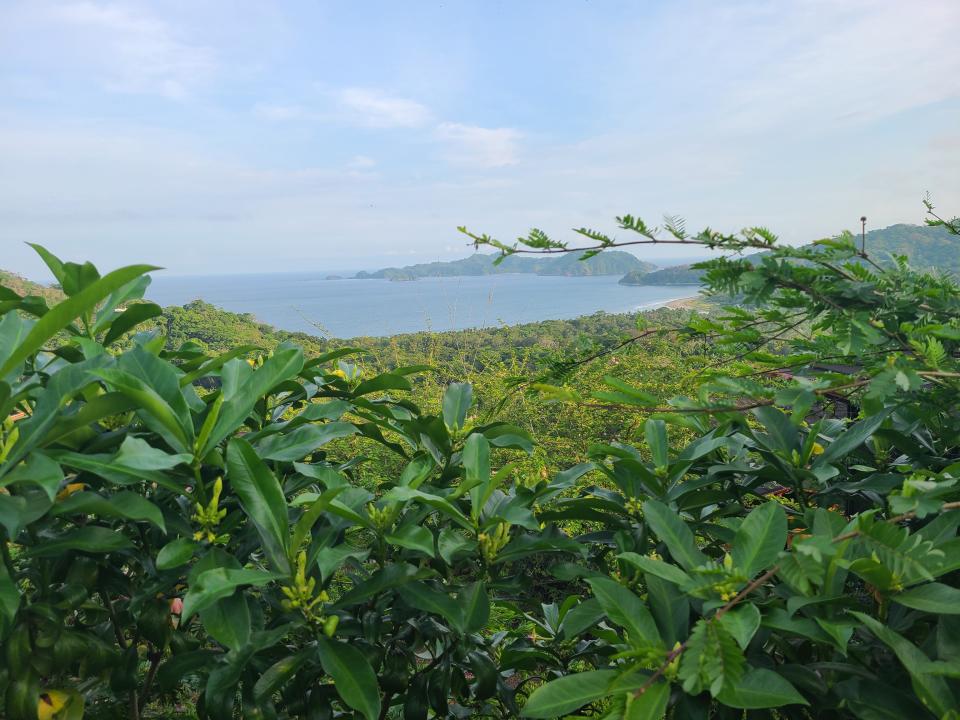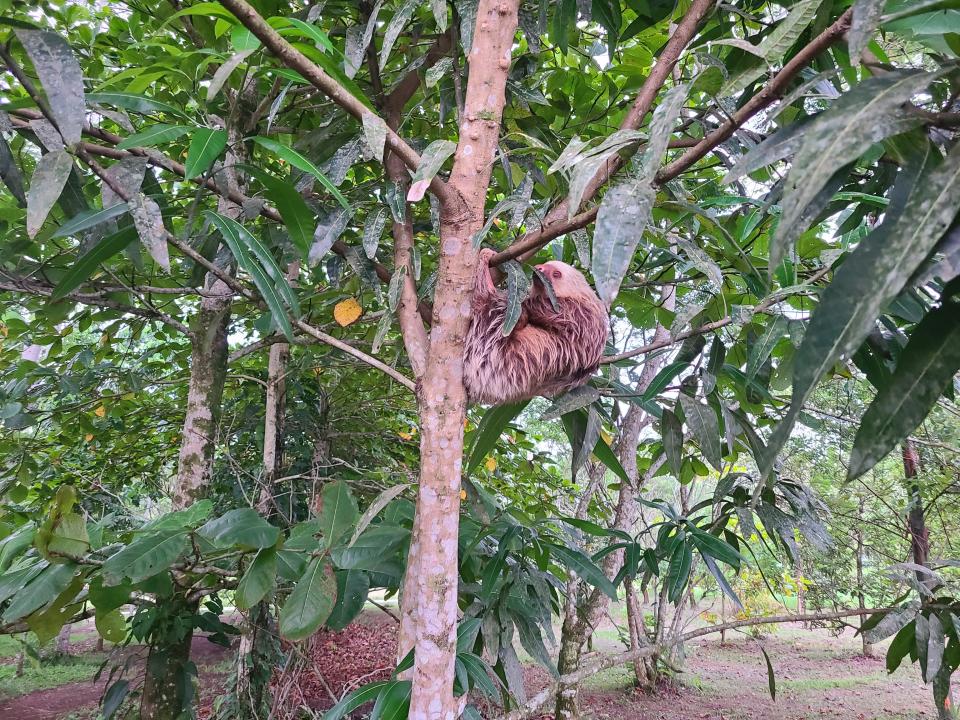I spent 12 days seeking Costa Rica's highlights, from the Cloud Forest to the Nicoya Peninsula. I'd revisit 3 places in a heartbeat but one tourist trap I'll never fall into again.
My partner and I spent nearly two weeks in Costa Rica for our birthdays this year.
We tried to see the highlights of the country as we visited Arenal, Monteverde, and Paquera.
Here are 3 activities I'd do again in a heartbeat, and 1 tourist trap I'd skip if we visited again.
My partner and I decided to splurge on a vacation to Costa Rica for a milestone birthday celebration this year. We spent 12 nights traveling across the western side of the country, trying to soak up as many of the Central American country's highlights as possible.
Costa Rica boasts 5% of the world's biodiversity, with white sand beaches and lush jungles to explore — a huge draw for us as animal lovers. It's also home to a small Blue Zone on the Nicoya Peninsula, where the region's residents are said to live longer, healthier lives than average.
Ultimately, we spent time in Costa Rica's capital city of San Jose, the volcanic hot springs of La Fortuna in Arenal, the cloud forest of Monteverde in Santa Elena, and the beaches of Paquera and Montezuma in the Nicoya region for a taste of the coastal life. While there were moments when we felt our experience was a bit too polished and gimmicky, the trip as a whole was full of incredible wildlife encounters and stunning views I haven't seen anywhere else in the world.
I'd hop on a plane tomorrow to go back if I could, but there are some things I'd skip on a return trip.
Rafting Rio Celeste in Arenal
Our first main stop was La Fortuna, in the shadow of Volcano Arenal — one of Costa Rica's active volcanoes. While this area has plenty of hanging bridge tours and night walks to spot wildlife like sloths and glass frogs, rafting down the Rio Celeste allowed us to see the jungle from a different perspective.
We traveled at the end of May, the start of Costa Rica's wet season, so we encountered fewer tourists than were usually present during our trip. This paid off especially well for our rafting excursion, where we were the only two people on the tour besides our guide.
For about two hours and $75 each, we navigated class II and III rapids — intermediate difficulty, with white caps up to three feet and some obstacles in the way — on the Rio Celeste, taking brief breaks to swim in the beautiful, clear water. We also took drone footage of curious howler monkeys who watched us from the shore.

Our guide pointed out local birds and fish, helping us stop our raft when there were sights we wanted to linger on. Once we were done on the water, we enjoyed fresh fruits and a hot lunch of empanadas, which was included in the tour's cost.
Hiking El Tigre Waterfalls in Monteverde
Hiking in the cloud forest of Monteverde quickly topped our list of things to do while we researched our trip. If I could have extended our stay longer, this is the one thing I'd want to do more of, mostly to see more of the incredible wildlife in the Puntarenas province.
High in the mountains, about 30 minutes from the artsy township of Santa Elena, we went on a self-guided hike to see the El Tigre Waterfalls. The 8-kilometer hike takes you through a humid jungle over several hanging bridges and offers stunning views of nearly a dozen waterfalls — but the animals were the highlight.
We saw massive butterflies, multiple species of hummingbirds and frogs, a toucan, motmots, a concerningly large snake, and glimpses of monkeys in the branches above.

Even in the cooler month of May, it was wildly hot in the jungle, so while the trekking wasn't physically challenging, we opted to catch a 4x4 up the mountain on the last leg of the trail — adding $20 to our $46 entry fee. For a little more than three hours of hiking, it was still a less expensive way to spend the afternoon than other tour options, and it once again felt like we had the trails to ourselves, only crossing paths with a few other groups the entire time we explored.
Bioluminescent kayak tours in Paquera
There are only a handful of places in the world where you can spot bioluminescent algae conditions year-round, and the coastal waters of the Nicoya Peninsula are one of them.
This tour was magical, even in less-than-ideal conditions for the glowing to appear. We shared a kayak and paddled out into the darkness with an enthusiastic guide who explained the chemistry behind bioluminescence and helped us find secluded coves to see the light produced by algae in the water.
The algae likes warm, still waters that get lots of light during the day. When it is charged with enough energy from the sun, it glows bright blue. In less-than-ideal conditions, it can appear greenish or white.
Our algae, which hadn't totally "charged," glowed an eerie white as our paddles broke the water's surface. It couldn't be captured on camera — but that's all the better, according to our guide, who encouraged us to be present in the moment, stepping out of our kayaks in a shallow cove to catch the algae in our shirts and watch it glow against the fabric and our skin.

At $36 each, perhaps we could have explored the coastline ourselves with a rented kayak, but the unique experience left us both feeling like it was one of the best parts of the trip.
Are coffee and chocolate walks worth it?
Costa Rica is known for its coffee and chocolate, so it's nearly impossible to drive through any main stretch of road without seeing signs for tours showing how the products are grown and cultivated.
They're not worth it. Any questions you have about the process can be answered at the gift shop where the tours end, and you're likely to get a free sample regardless of whether you paid for a 2+ hour tour.
We chose to take a night walk that included a coffee and chocolate tour. Our guide (for $60 each) walked us around the grounds of the coffee grove, explained how chocolate was made from cacao beans, and then sent us out with flashlights to look for wildlife in the dark.
While we bought chocolate for our friends and family as souvenirs, we didn't glimpse any exciting animals or glean any particularly interesting knowledge from our guide, so the tour stood out as a pricey decision we could have skipped without losing out on anything.

Overall, our Costa Rican adventure was beautiful, full of incredible sights, exciting excursions, and delicious meals I won't soon forget. If you're planning a trip, skip the highly curated outings to explore the country's less popular attractions — and be quick with your camera; the jungle won't wait.
Read the original article on Business Insider


